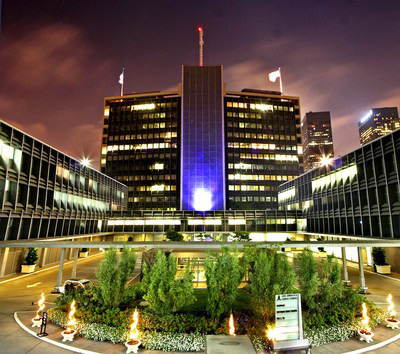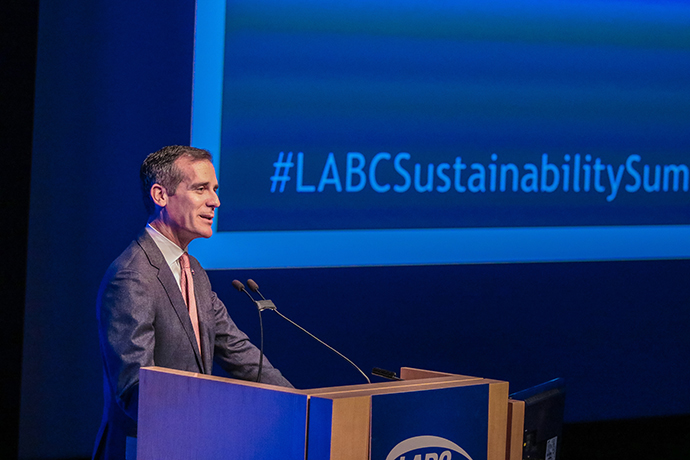Earlier this month, the third edition of the City Energy Efficiency Scorecard from the American Council for an Energy-Efficient Economy (ACEEE), revealed Boston remains the top US city for energy efficiency, receiving 84.5 out of a possible 100 points, an improvement of 2.5 from its 2015 score. "Whether you’re a resident who lowered their monthly utility bill through Renew Boston or an owner of one of our city’s leading green buildings, we should all be proud of our success to reduce energy and save money," said Boston Mayor Martin J. Walsh.
Cities in the Northeast and Mid-Atlantic regions had a high median score, but did not dominate. Following Boston, the top 10 US cities for energy efficiency are:
- 2. New York City
- 3. Seattle
- T4. Los Angeles; Portland, Oregon
- 6. Austin
- 7. Chicago
- 8. Washington, DC
- T9. Denver; San Francisco
"Based on a 25-point jump from the last edition of the Scorecard in 2015, Los Angeles was the most-improved city," said the ACEEE. "San Diego, Kansas City, and Phoenix are the second, third, and fourth most-improved cities, respectively. Seven other cities, including Orlando, showed double-digit improvements since the last Scorecard."
Additional findings from the 51-city analysis include the following:
- Phoenix increased its score in community-wide initiatives because of its adoption of the 2050 Environmental Sustainability goals, which include both energy savings and climate goals. "Phoenix exceeded its 2015 goal for reducing greenhouse gas emissions and is offering incentives to building owners to make their properties more energy efficient, working to make its own city buildings more energy efficient, and converting all 100,000 city streetlights to LEDs," said Phoenix Mayor Greg Stanton. "This recognition is another milestone in what has been a historic sustainability comeback for Phoenix in just the past few years. Most recently, Phoenix began rolling out its voter-approved Transportation 2050 program — the largest green infrastructure investment in city history. We’ve already boosted bus service and dial-a-ride for our residents and will triple light rail in the next few decades."
- Orlando is another of 11 cities that improved by at least 10 points. It aims to improve efficiency in existing buildings by benchmarking its energy use and making the data transparent and accessible. Austin, Philadelphia, Denver, Pittsburgh, Raleigh, Portland, and the four most-improved cities mentioned above round out this group. "Through collaborations with our business, nonprofit, and academic community," said Orlando Mayor Buddy Dyer, "over the last year, we have made great strides to dramatically increase the energy efficiency of Orlando’s buildings and transportation fleet. we enabled the Property Assessed Clean Energy (PACE) financing tool that unlocked more than $500 million for residential and commercial property owners and passed a historic energy and water benchmarking, transparency, and energy audit policy for the largest public- and private-sector buildings in Orlando. In addition, we’ve transitioned much of our city-owned fleet to alternative fuels and deployed millions of dollars to improve the efficiency of our city-owned buildings, saving taxpayers more than $1.4 million from previous years."
- San Diego passed a Climate Action Plan that established goals to reduce energy use by 15 percent in select homes and to reduce community-wide greenhouse gas emissions by 15 percent by 2020. "We’re now the number one city for solar panel installations in the country, we are using cleaner-burning fuels in our city vehicles, and we have committed to powering our city by 100-percent renewable energy," said San Diego Mayor Kevin Faulcone. " With the passage of our landmark Climate Action Plan, we’re setting the example for how to build a better and cleaner future for the next generation."
"Across the nation, cities are taking steps to save energy, and they are creating more economically vibrant and resilient communities in the process," said ACEEE senior researcher David Ribeiro, the lead report author.
In the five key areas covered by the report, the key findings are:
- Local Government Operations. Leaders in efficiency in local government operations are Denver, New York City, Philadelphia, Portland, and Washington, DC. All have policies to increase efficiency in city government, procurement, and asset management.
- Community-Wide Initiatives. The top-scoring cities in community-wide initiatives are Austin, Minneapolis, Portland, and Washington, DC. They have efficiency-related goals for the entire community and strategies to mitigate urban heat islands. They also have policies or programs to plan for future combined heat and power or district energy systems.
- Building Policies. Leading cities in building policies include Boston, Austin, Los Angeles, and New York City. These cities have adopted or advocated for stringent building energy codes, devoted resources to building code compliance, established requirements and incentives for efficient buildings, and increased the availability of information on energy use in buildings.
- Energy and Water Utilities. The cities with leading energy utilities are Boston and Providence. The energy efficiency programs of the utilities serving these cities offer high levels of savings and reach underserved markets, including low-income and multifamily households. Austin, Boston, Columbus, Denver, Los Angeles, New York City, and San Diego are the leading cities in tackling efficiency in their water systems and water uses. Utility customers in these cities have access to efficiency programs designed to save water and energy simultaneously.
- Transportation Policies. Cities with the top scores for transportation policies include Portland and New York City. Their initiatives include strategies to make their cities more compact and closer to transit options, shifts to efficient modes of transportation, transit investments, efficient vehicles and vehicle infrastructure, and energy-efficient freight transport.

Do You Love L.A.?
Boston almost has an unfair advantage: Energy costs in New England are so high that the incentive to save energy is equally high.
The rise of Los Angeles, however, is more surprising. The city rose eight positions from the scorecard’s 2015 edition, earning 76.5 points out of a possible 100. In the individual city profiles ACEEE makes available, the following highlights show why. Nearly all of them emanate from the city’s first-ever sustainability plan, unveiled last year, offering guideposts for other cities aspiring to similar futures:
Local Government Operations (8.5 of 10 points)
"Los Angeles has energy savings and greenhouse gas (GHG) emissions reduction goals for local government operations. The first Sustainable City pLAn Annual Report will track progress toward goals. The city has a LEED requirement for new buildings and a comprehensive retrofit strategy, and benchmarks the energy use of a large share of municipal buildings. Los Angeles leads by example through efforts to increase efficiency in vehicle fleets, public lighting, and equipment procurement."
Community-Wide Initiatives (10 of 12 points)
"Los Angeles adopted the Sustainable City pLAn in 2015, including community-wide energy savings and GHG emissions reduction goals. To achieve the city’s 2025 goal, it will need to reduce community-wide GHG emissions 2.6 percent annually. The city is on track to surpass this goal. The Sustainable City pLAn also includes goals of reducing the urban-rural temperature differential 1.7 degrees Fahrenheit by 2025 and 3 degrees by 2035."
Buildings Policies (25.5 of 28 points)
"Los Angeles adopted the Existing Building Energy and Water Efficiency (EBEWE) program in 2016. The EBEWE program includes energy audit, retrofit, and benchmarking requirements for commercial and residential buildings, as well as water efficiency measures. Benchmarking requires annual disclosure of energy data for commercial, residential, and municipal buildings. Like all California cities, Los Angeles enforces the 2016 California Energy Code, which took effect January 1, 2017, as well as amendments strengthening the 2013 California Green Building Code."
Energy And Water Utilities (14.5 of 20 points)
"The utilities serving Los Angeles have moderate investments in energy efficiency spending and savings. The Los Angeles Department of Water and Power scored above average on electric efficiency spending and savings. Southern California Gas has average natural gas efficiency spending and savings. Both utilities run low-income and multifamily efficiency programs. The city earned a perfect score for energy efficiency in water services."
Transportation Policies (18 of 30 points)
"Los Angeles has multiple plans to encourage efficiency in transportation, including the Sustainable City pLAn, which established a citywide goal of reducing vehicle miles traveled (VMT) per capita by 5 percent by 2025. A portion of the city’s zoning overlays encourage transit-oriented development and mixed-use development, and the city offers density bonuses for all affordable housing units. Los Angeles has also reduced minimum parking requirements for certain developments. The city has several initiatives that incentivize affordable housing development near transit centers. The city could improve its score by increasing its focus on mode shift strategies and freight system efficiency. "
Other facts the city can marshal to its case include:
- At 225 MW, L.A. has the most installed solar power of any city in the U.S.
- L.A. has the highest recycling rate of any big U.S. city.
- At over 1,300, L.A. has the most publicly available electric vehicle chargers of any U.S. city.
- The city has achieved a record 20-percent reduction in water use per capita, making L.A. the most water-efficient big city in America — since 2014, L.A. has reduced enough water to fill over 90,000 Olympic swimming pools.
In March, Los Angeles Mayor Eric Garcetti released a progress report that showed early achievement of more than two-thirds of 2017 goals contained in the Sustainable City pLAn, originally announced in 2015.
“The Sustainable City pLAn has unlocked collaboration between government, the private sector and innovative Angelenos, while creating jobs, advancing environmental justice, and reducing greenhouse gas emissions,” said Matt Petersen, the city’s chief sustainability officer. “Mayor Garcetti’s leadership is creating a more sustainable Los Angeles, and we are bringing cities together across this country to fight climate change.”
Indeed, Garcetti and fellow city leaders as well as mayors and governors nationwide continue to respond to climate change as if it were real. Several news reports on May 30 indicated that President Donald Trump plans to pull the United States out of the Paris Climate Agreement, already prompting noted entrepreneur Elon Musk to say he would resign from the president’s CEO advisory councils if that were true. In March, Garcetti responded to the president’s earlier actions at the EPA:
“President Trump’s moves today to undo the Clean Power Plan and roll back other key climate policies undermine the important efforts — throughout the country and the world — to tackle the single greatest threat and economic opportunity of our time: climate change," said Garcetti. "I asked 37 of my fellow ‘climate mayors’ to join me in writing President Trump to object to his actions, including severe proposed budget cuts to the EPA and clean energy programs like Energy Star at the U.S. Department of Energy, and rollbacks to vehicle fuel efficiency standards. The administration is taking clear steps to undermine not only the federal government’s commitment to meeting the goals of the Paris Climate Agreement, but also U.S. leadership on public health and growing the clean energy economy.
"No matter what happens in Washington, we will work to meet our Sustainable City pLAn goal to reduce greenhouse gas emissions 80 percent by 2050, move toward zero emissions transportation, and pursue our vision of a 100-percent clean energy future. Los Angeles has also divested from the coal-fired Navajo Generating Station, and the Los Angeles Department of Water and Power will be completely coal-free by 2025. Nothing can stop us from investing in electric cars and mass transit; from ending our reliance on coal; from installing cool roofs and pavement; or from leading America in solar power. Los Angeles will uphold the obligation to preserve the health of our planet, protect our most vulnerable residents, and create a 21st century economy — and working with my fellow ‘climate mayors,’ we will continue doing our part to meet the goals of the Paris Climate Agreement in cities across the country."

